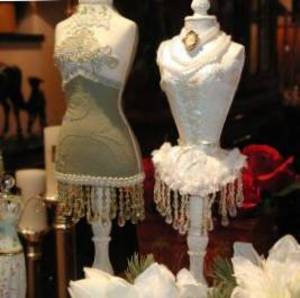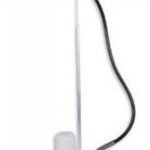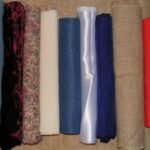If you are planning on making a corset, whether it’s for a costume or to wear as clothing or an undergarment, you need to know some basic tips as to which type of boning you need for your corset. This guide will help you decide which type of corset bones you need to buy to get the look you want from your garment.
Sewing Guide to Choosing Corset Boning: There are many types of boning available to use in corsets. And generally any type will work in any corset. It’s not that there is a right boning or wrong boning for corsets. It’s more a matter of personal preference and how you want to look and feel while wearing your corset. If you are making a costume, you probably want a corset with more flexible bones so you are comfortable. If you are making a corset that you will not be wearing for a very long time, you may want to opt for a harder bone with lots of structure. Here are some tips to help you decide which corset boning is right for your sewing project.
White Steel Boning: White steel boning is a rigid bone made of steel spring which is coated with white nylon. The coating prevents rusting and makes this type of boning good if you plan on frequent washings. White steel boning generally has moderate flex in one direction. It’s good for any type of corset including costume corsets.
Plastic Boning: Plastic boning is generally used to add some shape to a corset and to prevent having the fabric of the garment roll up. Plastic boning is very flexible and is not a good choice for waist reduction corsets. It is good for garments that require very light support and also for sexy lingerie garments. It is extremely durable and washable.
Rigilene Boning: Rigilene boning is a polyester boning that you can sew through by hand or by machine. It’s a very flexible boning so it is not good for waist reduction corsets. But it is a wonderful boning for giving shape and support to swim suits, strapless garments, theatrical costumes, evening wear, and soft toys. It is very durable, will not crack and is washable.
Spiral Steel Boning: Spiral steel boning is stiff when sewn into a corset or other garment yet the 2 directional flex adds comfort. This type of boning is ideal for areas that require mobility such as brassieres and curved corset seams. Dry cleaning is recommended for this type of corset boning.
Fusion Coated Boning: Fusion coated boning is a very stiff and rigid boning that is excellent for waist cinching corsets. They have very little flex and provide the ultimate support. Fusion coated boning is an especially good choice for making corsets for large busted women. Dry cleaning is recommended for this type of corset boning.
Lacing Bones: Lacing bones are very rigid and are used in for the back of corsets. The bones have holes so you can pass the lace through them. This is the type of boning you want for the back of a corset if you are into the waist reduction corset with a very cinched waist.




